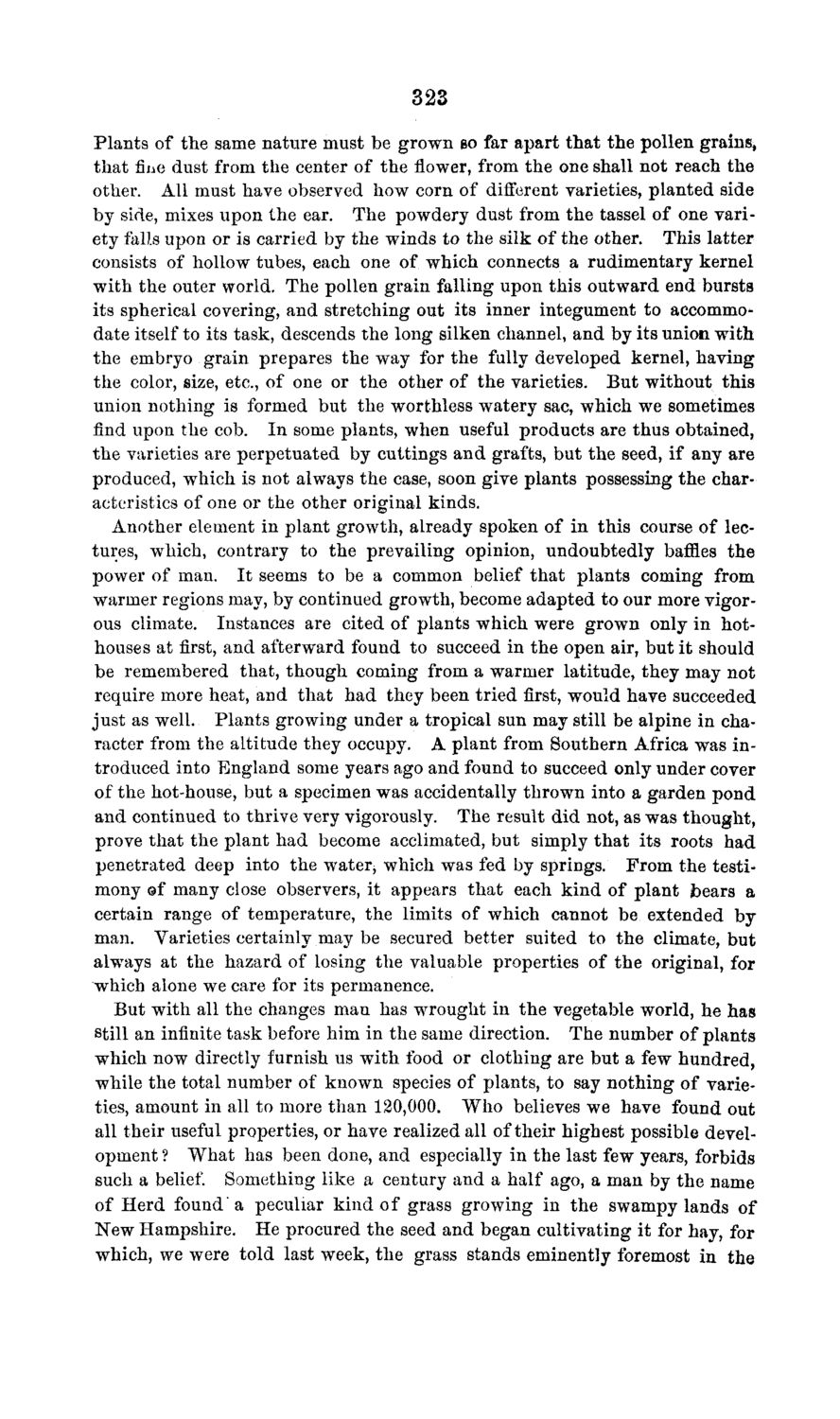| |
| |
Caption: Board of Trustees Minutes - 1869
This is a reduced-resolution page image for fast online browsing.

EXTRACTED TEXT FROM PAGE:
323 Plants of the same nature must be grown go far apart that the pollen grains, that fine dust from the center of the flower, from the one shall not reach the other. All must have observed how corn of different varieties, planted side by side, mixes upon the ear. The powdery dust from the tassel of one variety falls upon or is carried by the winds to the silk of the other. This latter consists of hollow tubes, each one of which connects a rudimentary kernel with the outer world. The pollen grain falling upon this outward end bursts its spherical covering, and stretching out its inner integument to accommo* date itself to its task, descends the long silken channel, and by its union with the embryo grain prepares the way for the fully developed kernel, having the color, size, etc., of one or the other of the varieties. But without this union nothing is formed but the worthless watery sac, which we sometimes find upon the cob. In some plants, when useful products are thus obtained, the varieties are perpetuated by cuttings and grafts, but the seed, if any are produced, which is not always the case, soon give plants possessing the characteristics of one or the other original kinds. Another element in plant growth, already spoken of in this course of lectures, which, contrary to the prevailing opinion, undoubtedly baffles the power of man. It seems to be a common belief that plants coming from warmer regions may, by continued growth, become adapted to our more vigorous climate. Instances are cited of plants which were grown only in hothouses at first, and afterward found to succeed in the open air, but it should be remembered that, though coming from a warmer latitude, they may not require more heat, and that had they been tried first, would have succeeded just as well. Plants growing under a tropical sun may still be alpine in character from the altitude they occupy. A plant from Southern Africa was introduced into England some years ago and found to succeed only under cover of the hot-house, but a specimen was accidentally thrown into a garden pond and continued to thrive very vigorously. The result did not, as was thought, prove that the plant had become acclimated, but simply that its roots had penetrated deep into the water^ which was fed by springs. From the testimony ©f many close observers, it appears that each kind of plant bears a certain range of temperature, the limits of which cannot be extended by man. Varieties certainly may be secured better suited to the climate, but always at the hazard of losing the valuable properties of the original, for which alone we care for its permanence. But with all the changes man has wrought in the vegetable world, he has still an infinite task before him in the same direction. The number of plants which now directly furnish us with food or clothing are but a few hundred, while the total number of known species of plants, to say nothing of varieties, amount in all to more than 120,000. Who believes we have found out all their useful properties, or have realized all of their highest possible development ? What has been done, and especially in the last few years, forbids such a belief. Something like a century and a half ago, a man by the name of Herd found'a peculiar kind of grass growing in the swampy lands of New Hampshire. He procured the seed and began cultivating it for hay, for which, we were told last week, the grass stands eminently foremost in the
| |